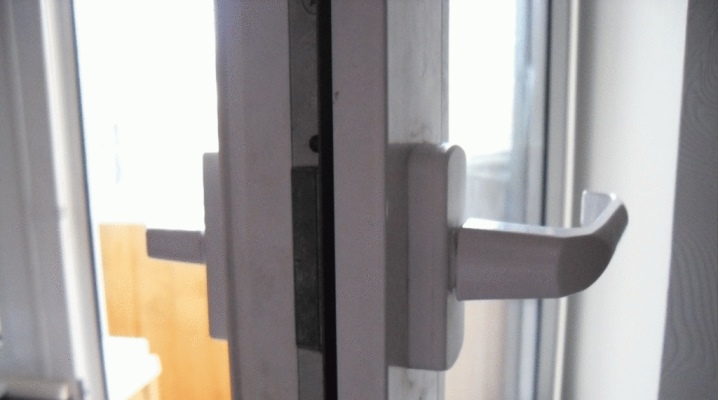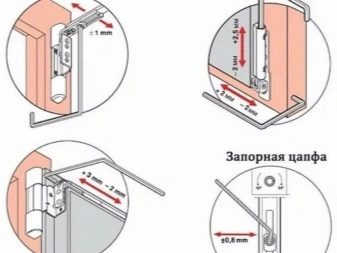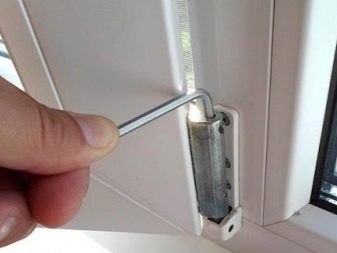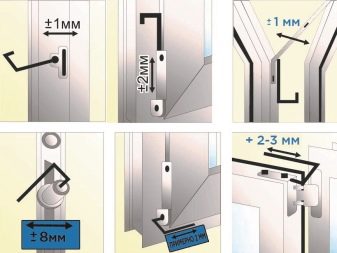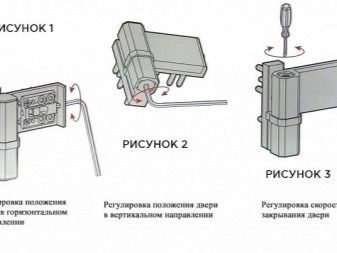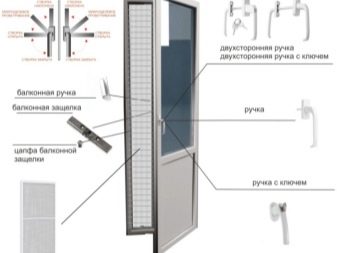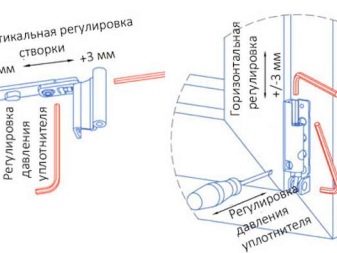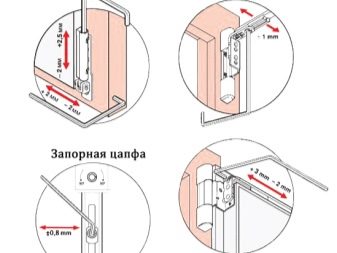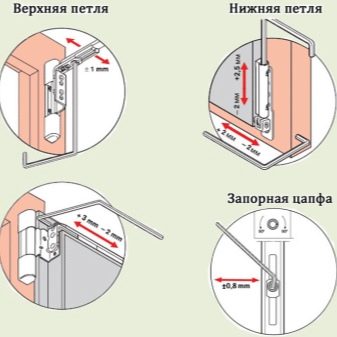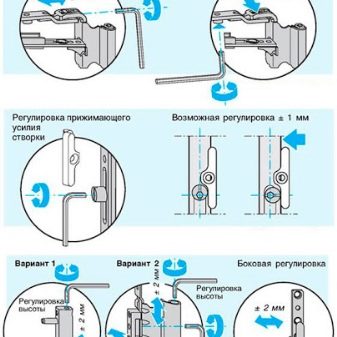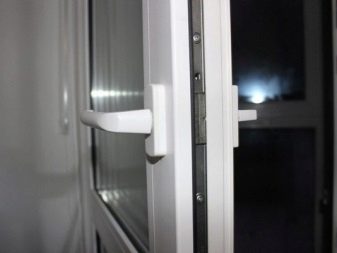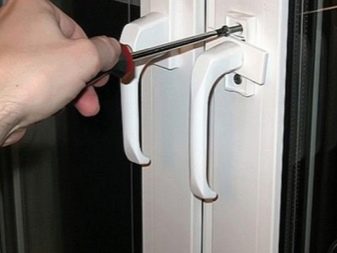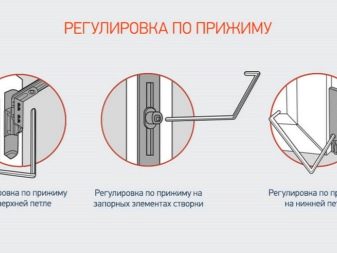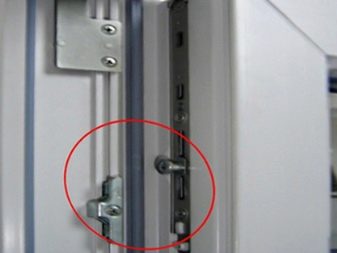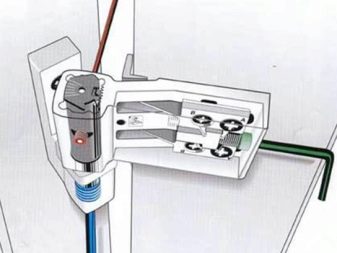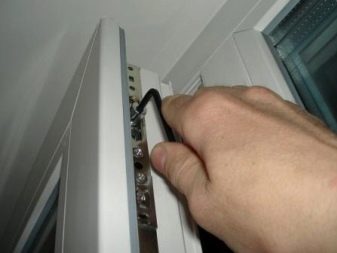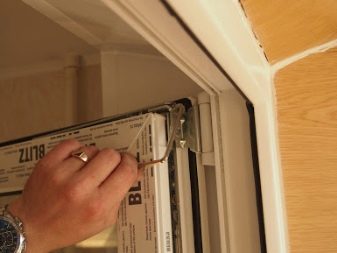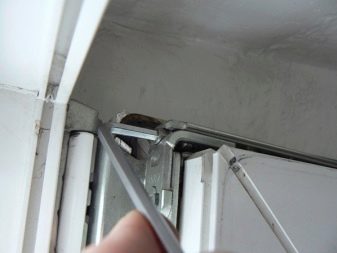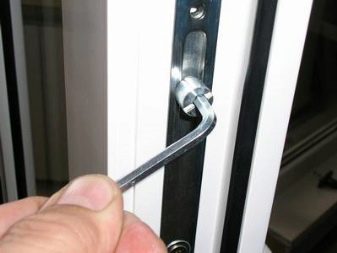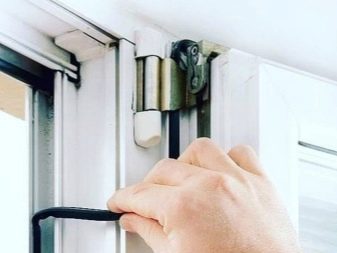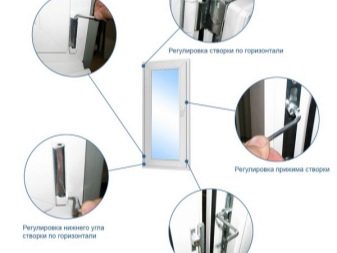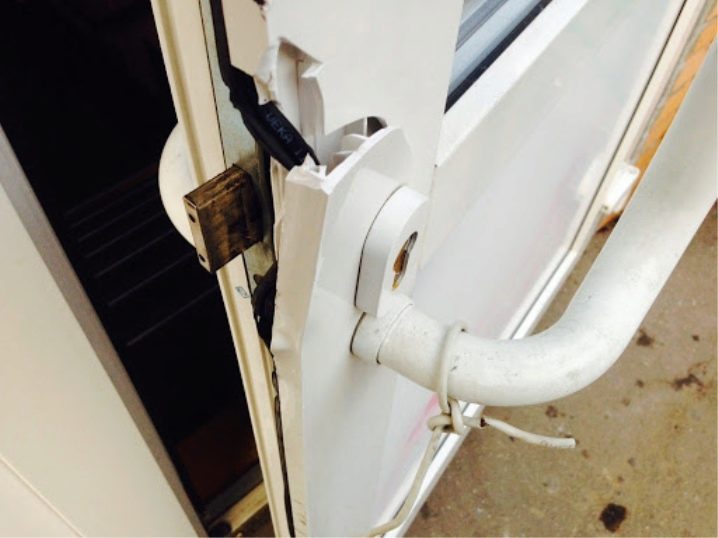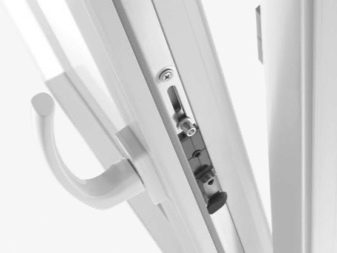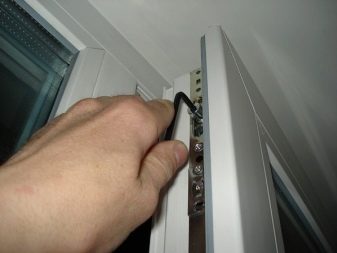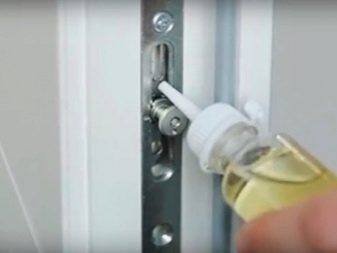Adjusting the plastic balcony door
A balcony door made of plastic is the choice of millions of people who chose to install euro windows in their homes. It not only keeps the room warm, but also protects it from heavy rainfall. A convenient and successful purchase can turn life into a nightmare if it stops functioning normally. A skewed door frame leads to drafts, unwanted humidity and cooling of the room.
When should you regulate?
When installing a balcony door, you must immediately check if there are any small openings between the door frame and the wall, otherwise it will sooner or later lead to a distortion. Changing the position of the sash in relation to the rest of the structure will lead to the fact that it will not close well from the outside. Each part of the plastic door must fit snugly against each other, if provided by the manufacturer.
In order not to blow through each gap, rubber gaskets are provided in the doors. When closed, they are squeezed as much as possible between structural elements. If the rubber band has moved away, and at intervals the wind whistles and water pours out, the door has broken. The reason for this can be severe frosts, temperature changes and the age of the structure: over time, the gaskets crack and crumble.
Another sign that the door needs adjustment is if the door handle is tightly closed. If in order to turn it, you have to make an effort, press the surface of the sash with your knee or elbow, then it's time to work on it.
In a neglected state, the door frame will sag so much that it will cling to the box, stop closing at all and will only cause discomfort to the homeowners.
Sooner or later, this will happen anyway, since the glass sheet has a large mass, therefore, not every mechanism is able to withstand such a load for too long. Frequent use leads to the fact that the moving parts begin to loosen, so the bolts, hinges and handle cease to function.
To repair a sagging door, you can call a specialist, especially if it is still under warranty, and the installers carried out the installation only recently. A qualified technician will not only detect an old breakdown, but also warn new ones. It is not difficult to solve this problem on your own if you have confidence in your abilities. The repair will take no more than 30 minutes and will consist in tightening the knots.
Instructions
In order to properly independently adjust the balcony door, it is necessary to assess the condition of its mechanical elements, because the problem may not be in them. Most often, it is the rubber gasket that goes around the plastic around the entire perimeter that fails. When she leaves, difficulties begin with closing and opening the door and drafts. Low temperatures or, for example, freezing to the frame can be the cause of such a breakdown. One sharp movement - and everything comes off. Replacing it with your own hands is quite simple: the gasket is inserted into the openings without using additional fixing means like glue, so it will not be difficult to get it out and insert a new one back.
If the gasket is ok, the adjusting screws should be inspected. Often they are covered with decorative plates, so you can get a good view by removing the covers. For repairs and adjustments, they most often resort to using a No. 4 hex wrench.It will fit most window screws, however each manufacturer uses different parts, so the number 3 hex should also be handy. Sometimes pliers can be useful to rotate individual elements that are too tight and difficult to reach. An asterisk and a flat screwdriver are not essential tools, but they can save the owner of the door in difficult times.
To carry out a quick diagnosis and visually assess the level of damage, if it is not so noticeable at first glance, you can resort to a simple method. When the mechanisms are loosened, the canvas in relation to the box will be placed crookedly or its position will not correspond in height. It is recommended to close the door and trace the outline of the frame over its entire area. If the lines are not parallel to the box, namely, to its inner edges, then there is a breakage.
The following elements are subject to adjustment:
- pins;
- loops;
- clamping strips.
Trunnions - rods or bushings, the movement of which ensures the opening and closing of the door. They are located around the perimeter of the entire door and are activated by moving the handle. Hinges - hinges located at the top and bottom of the door frame, rotation around which allows the door to open.
Clamping or striking plates are what restrict the movement of the door. They are attached to the box and are directly connected to the trunnions.
A pen
A common problem with plastic balcony doors is loosening of the handle. Loose latches can cause it to simply dangle. You will have to make a lot of effort to open or close the passage: turning the handle will be very tight. This is due to the fact that the fastening screws, loosened and left the holes, begin to abut against the plug. You can set them up yourself quite easily: the plate must be turned from a parallel position to a perpendicular one, thereby opening access to the screws. After they are tightened to the very end, the handle will begin to work the same way as before.
If you hear the squeak of the fittings, and at the same time the handle turns tightly, the problem may lie in the incorrect engagement of the bar and the trunnion. Due to temperature extremes, cold snaps and warming, the frame made of PVC and metal can deform. Therefore, if you turn the trunnion with the mark "on the street", this can solve the situation.
Clamp
Problems with the fit of the door can be felt physically: cold air will blow through the openings, even if the door leaf is tightly closed. To understand exactly where the problem is localized, you can do a light test using a thin album sheet. It is inserted into the door opening and pulled out after the sash is closed. If the sheet comes out freely, it means that there is a low pressure density in this place.
You can repair the breakage by adjusting the trunnions. On one of the sides they have a mark that looks like a point or a slot and is directed upwards by default. By turning the pivot, the seasonal door modes are changed: "winter" and "summer". The pressure will be weaker or denser depending on the season. If more air is needed, it is necessary to unscrew the trunnion with the mark "on the street". If it's the other way around, a screwdriver or a hex wrench will help turn it towards the room.
Twisting the lower buttonhole is another way to change the pressure. A small screw can be seen at the front of the opening when the curtain is closed. It is his rotation that will contribute to the tight fit of the door. If even this does not help, you should contact the specialists: the breakdown consists in improper installation, marriage or breakdown of the entire structure. A temporary solution to the problem is to twist the striker towards the street.
Not for long, but it will still help remove the draft.
When sagging
If a double-glazed window is built into the door structure, it will most likely begin to sag after a while. This is due to the load on the clamping bars, which can be increased by additional weight in the form of bags, outerwear and other things. If the door does sag, it can be lifted using the lower hinge.
To tighten the loose mechanism, a hex key is inserted into it. If you rotate it counterclockwise, the door will lower more. If clockwise, it rises to the standard level. This technique is good when the door only engages at one corner.
When skewed, both the upper and lower hinges are adjusted at the same time. Scrolling to the right will bring the door closer to the key, to the left - and it will begin to move in the opposite direction. You can understand that the setting is complete by the inner contour of the frame and the outer door: they must be parallel.
In that case, if this does not help, you can install linings under the glass unit, but it is not recommended to do this on your own. Craftsmen insert wedges, pre-calibrated, in place of glazing beads - plastic or aluminum slats that prevent the penetration of dust and moisture into the window gaps.
At home, such operations should not be carried out: with an incorrectly distributed load, the glass unit will simply burst.
When touching the middle
If the sagging curtain hits the middle part or edge of the window frame, make sure that the fittings are not tilted away from the corner. This problem manifests itself in autumn or winter, because the rest of the time the double-glazed window was in the "Airing" mode. Due to this arrangement, the frame deforms under its own weight, so the trunnions engage with it. In order for the problem to be solved, the sash is shifted horizontally, while trying to prevent skewing, otherwise the door will finally break. Adjusting the upper and lower loops will help to do this.
They can be accessed by opening the door. After inspecting the top of the web or corner, it becomes clear where the heads that can be corrected are located. The screws must be turned sequentially: first from the top, then from the bottom. It is important to catch the moment when the blade will align: this will mean that the trunnions no longer touch the box. If the edges of the door are parallel to the sides of the box and at the same time equidistant, then the setup is complete. With a poor eye, you can easily check this with a pencil: the outlined contour of the canvas in the closed position will best demonstrate the level of curvature.
Seasonal adjustment
Plastic doors differ very favorably from wooden doors not only by their properties and maintenance rules, but also by their special capabilities. One of them is a seasonal restructuring of the structure, which ensures the maintenance of a pleasant and weather-appropriate microclimate in the room while maintaining heat., the level of humidity and relative tightness, because for the movement of air masses it was decided not to embody this specific property in the design at 100%.
Manufacturers recommend weakening the door pressure in summer and during hot periods: this will allow the air to better ventilate the room, so the feeling of heat and high temperatures will be tolerated by the homeowners much easier. In winter, when the air heats up from the batteries and moves throughout the room (sometimes cooling, then again acquiring a comfortable temperature for a person), it is very important to avoid additional drafts.
An unevenly heated room will increase the humidity level due to condensation of water in the cooled air on the glass walls.
Fogging windows is a warning sign. This means not only that serious mistakes were made during the installation, but also that with improper care, only one thing awaits the owners - the appearance of mold on the walls around the box.
Of course, due to the operation of batteries, the heated air in the rooms quickly becomes dry, which also adversely affects human health, because in this case, the drying out mucous membranes of the nose and mouth become defenseless in the face of viruses, bacteria and other antigens that cause infections. But this problem is solved by regular ventilation, and not by improper use of windows.
If the double-glazed windows have been installed recently, you should not increase their pressure too much during the winter: the rubber seal on them still perfectly holds its shape and does not let anything into the room, therefore, if you diligently "play it safe", it can be very easily damaged - and then serious difficulties will begin. Basically, all of the above problems are true for windows that have already defended a season or two, so their tightness can be maximally violated.
The trunnions are responsible for seasonal adjustment, because exactly how they affect the degree of pressing in a given situation. Their labeled side is a hint to the craftsmen who are going to do the sizing of the windows. A notch or point, looking in a certain direction, increases or decreases the pressure of the blade. The design and appearance of the trunnions can vary according to different technologies of manufacturers, but mostly these are round knurled rods.
If the eccentric mark is directed towards the street, it means that the door is in the "summer" mode, and pressing the sash to the frame is minimal. If the mark looks down, then the position is "average", that is, demi-season. In the "winter" position, the notch is turned towards the room - and this is the most dense mode of all possible.
Sometimes eccentrics look like oval cylinders, and then the following is true for them:
- vertical position - summer;
- position "obliquely" - off-season (spring or autumn);
- horizontal position - winter.
Recommendations
It is possible and necessary to take care of the plastic door. Depending on the season and weather conditions outside the window, you need to check the condition of the mechanisms. Preventive twisting and tightening of loops should be carried out once a year. If there is any large or small dirt on the door, they must be removed with a brush so that not a single particle remains on the surface. Rubber gaskets should be treated with a silicone-based lubricant: this will improve not only their water-repellent properties, but they will also not crack and dry out.
Tape fittings, which ensure door movement, are also treated with mineral oil. In order to return it to its former functionality, it is necessary to process each node at the points of application, which usually show tiny oilers or drops. It is not necessary to pour too much oil: the composition is easily distributed over the entire area if the mechanism is opened and closed 3 to 4 times.
If you ignore all these actions, the door during active operation will not last long.
All about adjusting a plastic balcony door, see the video below.
